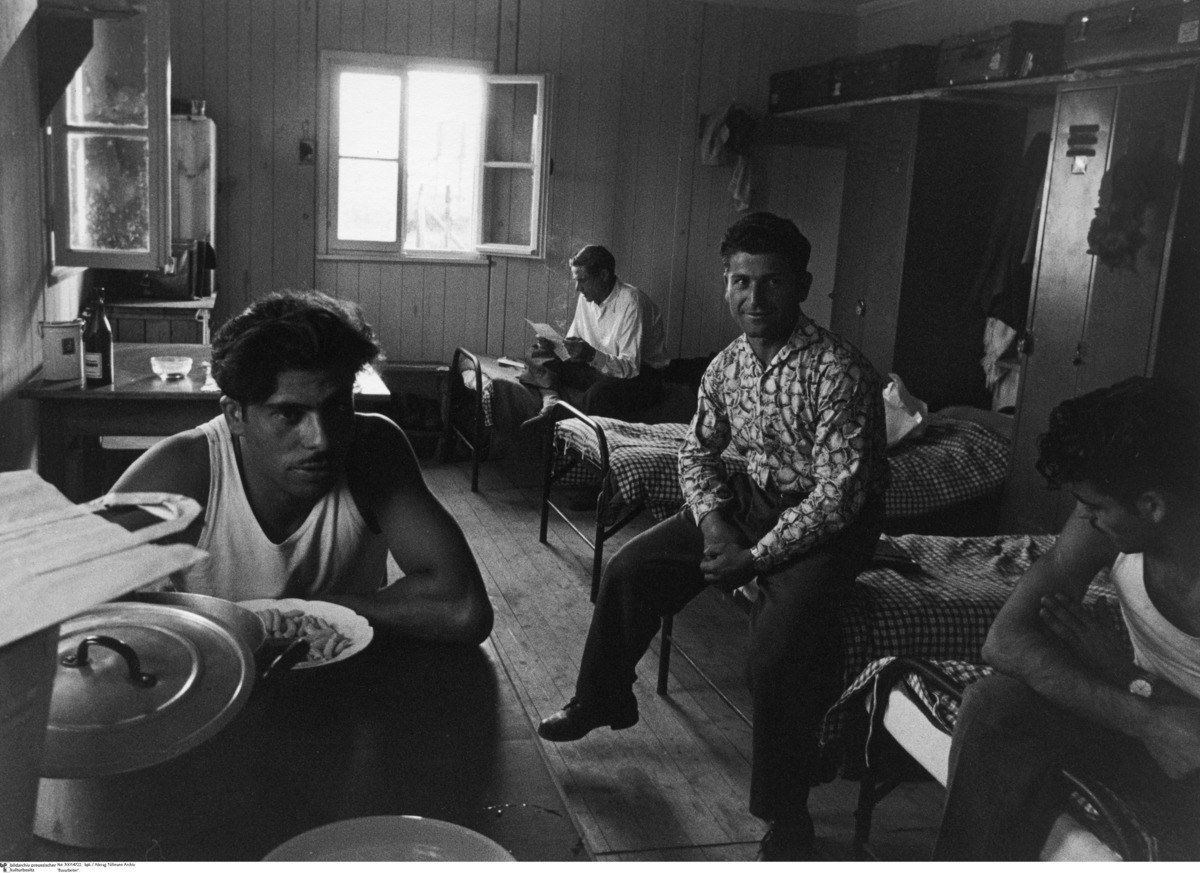Abstract
The “guest worker” [Gastarbeiter]
recruitment agreement that West Germany signed with Italy on December
22, 1955, was the precursor to and model for additional West German
treaties with Spain and Greece (March 1960), Turkey (October 1961),
Portugal (March 1964), and Yugoslavia (October 1968). In 1959, a total
of 166,800 foreign nationals, 48,800 of whom were Italians, were
employed in the Federal Republic of Germany. These guest workers were
hired to ensure that certain sectors of the German economy would have
the necessary manpower to maintain their high growth rates. The guest
workers were seen as a flexible, cyclically-dependent pool of laborers
who could be recruited as needed and then sent back to their home
countries. As a result, the first recruitment efforts focused on young
single men, who were put up in makeshift dormitories of varying degrees
of comfort. Germany could theoretically have met its labor needs by
bringing more women into the workforce, but this went against family
policy at the time.
